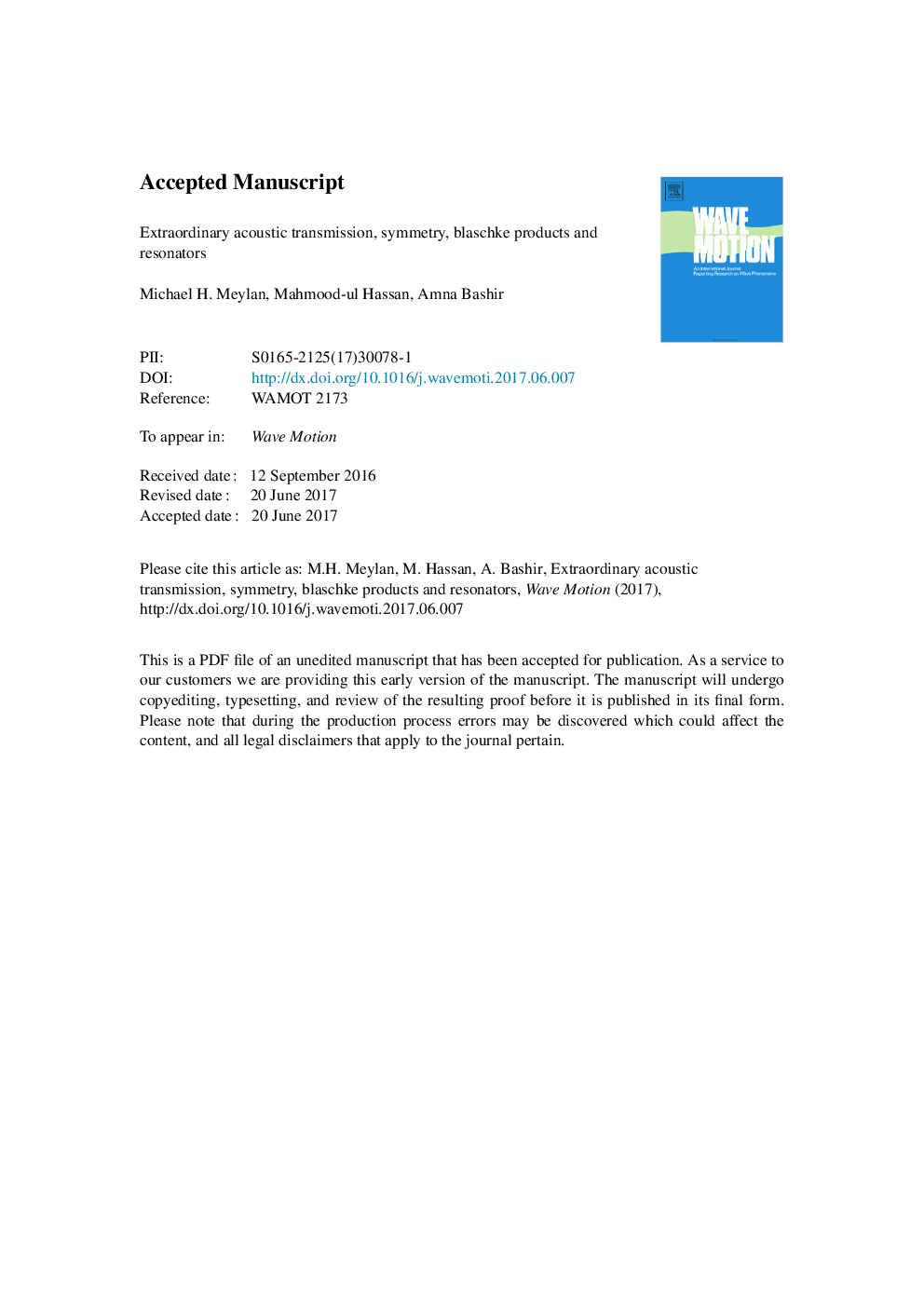| Article ID | Journal | Published Year | Pages | File Type |
|---|---|---|---|---|
| 5500467 | Wave Motion | 2017 | 40 Pages |
Abstract
The phenomenon of extraordinary acoustic transmission ( eat) in a resonator, which has recently been investigated experimentally, is studied theoretically. It is shown that the combination of a single propagating mode and a symmetry orthogonal to the direction of propagation for a resonator leads to eat. This is accomplished by decomposing the problem using symmetry, the Blaschke product and the properties of functions of a single complex variable which have modulus one on the real axis. The conditions of a resonator requires that the solution has singularities in the analytic extension to complex frequencies (resonances) and it is precisely near these resonances that we observe eat. The condition of a Blaschke product requires that there is a zero at the complex conjugate of the singularity and eat occurs when the solution on the real axis passes between these complex conjugate pairs of poles and zeros. A detailed numerical study of the problem is conducted and we show that once the single mode of propagation or the symmetry is broken then eat (at least perfect transmission) no longer holds generally.
Related Topics
Physical Sciences and Engineering
Earth and Planetary Sciences
Geology
Authors
Michael H. Meylan, Mahmood-ul Hassan, Amna Bashir,
